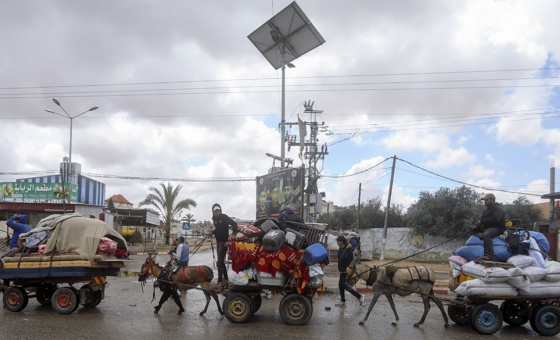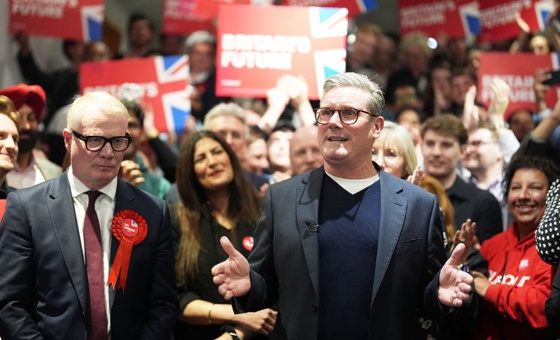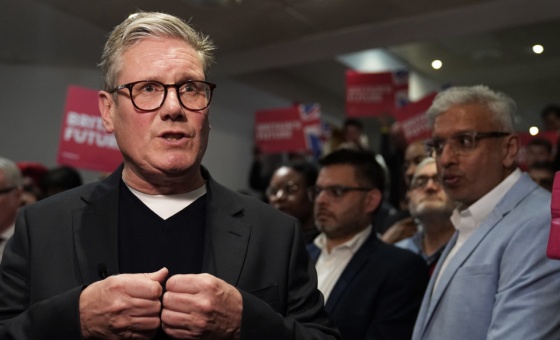This is the last article you can read this month
You can read more article this month
You can read more articles this month
Sorry your limit is up for this month
Reset on:
Please help support the Morning Star by subscribing here
SET up in 2009 by Climate Analytics and New Climate Institute, Climate Action Tracker (CAT) conducts independent scientific analysis that tracks the response by governments across the world to the climate crisis.
In particular, CAT measures government action against the globally agreed 2016 United Nations (UN) Paris Agreement aim of “holding warming well below 2°C, and pursuing efforts to limit warming to 1.5°C.”
For context, in 2018 The Guardian’s environment correspondent Fiona Harvey noted: “Even 1.5°C of warming would cause sea level rises, coral reef die-off, extinction of species and droughts, floods, storms and heatwaves that would threaten the world’s stability.”
Worryingly, she explained: “Levels of warming greater than that would devastate parts of the globe, wiping out agricultural productivity, melting the Arctic ice cap and rendering many areas uninhabitable.”
With Britain hosting the next major UN climate change conference, COP 26, in November 2021, the work of Sofia Gonzales-Zuniga and Ryan Wilson from CAT is highly topical.
Your work highlights the importance of differentiating between the pledges made by governments, and the policies they actually implement.
What is the likely global temperature increase by 2100 that will result from the currently implemented policies of all the world’s governments?
And if governments stick to their pledges made under the 2016 Paris Agreement what would this mean for temperature rise?
Sofia Gonzales-Zuniga (SG-Z): We estimate the temperature increase from current policies in 2100 will be 2.9°C (a range of 2.1-3.9°C).
If they stick to their pledges made under the Paris Agreement this would come down to 2.6°C.
Note: we don’t analyse all countries, rather all the biggest emitters and a selection of smaller emitters, totally around 80 per cent of global emissions.
How many countries are currently on track to meet the pledged emissions reductions they signed up to in the Paris Agreement?
And how many countries does CAT assess are acting consistently with the Paris Agreement’s goal of 1.5°C?
SG-Z: Who is on track? That’s an interesting question, because many countries don’t have very strong pledges.
India and China, for example, are both set to overachieve their pledges, a strong indication they could increase them.
Russia has always had a pledge that it will well overachieve.
In terms of being on a 1.5°C pathway, there are few countries on that track.
We assess India to be nearly there, plus the Gambia and Morocco, and, if it achieves its Paris Agreement pledge, the UK.
We rate their pledges and not the policies currently in place to meet them, thus more work is required by all to get onto a Paris Agreement pathway.
Two recent global events have increased hopes the world can address the climate crisis — China’s September 2020 announcement it will “aim to achieve carbon neutrality before 2060” and Joe Biden from the Democratic Party being elected president of the United States.
What effect are these two events likely to have on the climate crisis?
SG-Z: These will make a huge difference. We estimate the China pledge would shave 0.2-0.3°C off global warming, and the US around 0.1°C.
We have now modelled the warming estimate for the combined net zero pledges made by 127 countries, and this, if achieved, would bring warming in 2100 down to 2.1°C.
The British government presents itself as a “world leader” when it comes to addressing climate change. What is CAT’s assessment of Britain’s current policies?
Ryan Wilson: The UK’s recent commitment to achieve at least a 68 per cent reduction in domestic GHG [greenhouse gas] emissions below 1990 levels by 2030 is a world-leading target, and places the UK on a 1.5°C Paris Agreement compatible domestic emissions reduction pathway.
To ensure it is contributing its fair share to global mitigation efforts though, the UK needs to ramp up its support for less wealthy nations to achieve emissions reductions through measures like climate finance or direct funding for sustainable development projects.
A 1.5°C compatible fair share level of effort for the UK combining such measures with its domestic target would see the UK reaching net-zero emissions by around 2030.
Despite a number of significant recent policy announcements, the UK will require a considerable scaling up of climate action just to reach its new 2030 target.
Recent announcements like a 2030 ban on the sale of fossil fuel vehicles and a drastic scaling up of offshore wind energy are positive steps in the right direction, but strong ongoing commitments will be needed to achieve deep emissions cuts across all sectors of the economy.
Setting a strong emissions reduction target is just the first step, the UK government must now back it up with action.
Due to the pandemic, COP26 in Glasgow, the next major UN climate change conference, has been postponed to November 2021. What should governments being doing to prepare for this?
SG-Z: We expect governments to continue cutting emissions and, if they haven’t done so already, to submit a strengthened target to the UNFCCC [United Nations Framework Convention on Climate Change], as they agreed to do every five years under the Paris Agreement.
Read more about the work of Climate Action Tracker at climateactiontracker.org.












